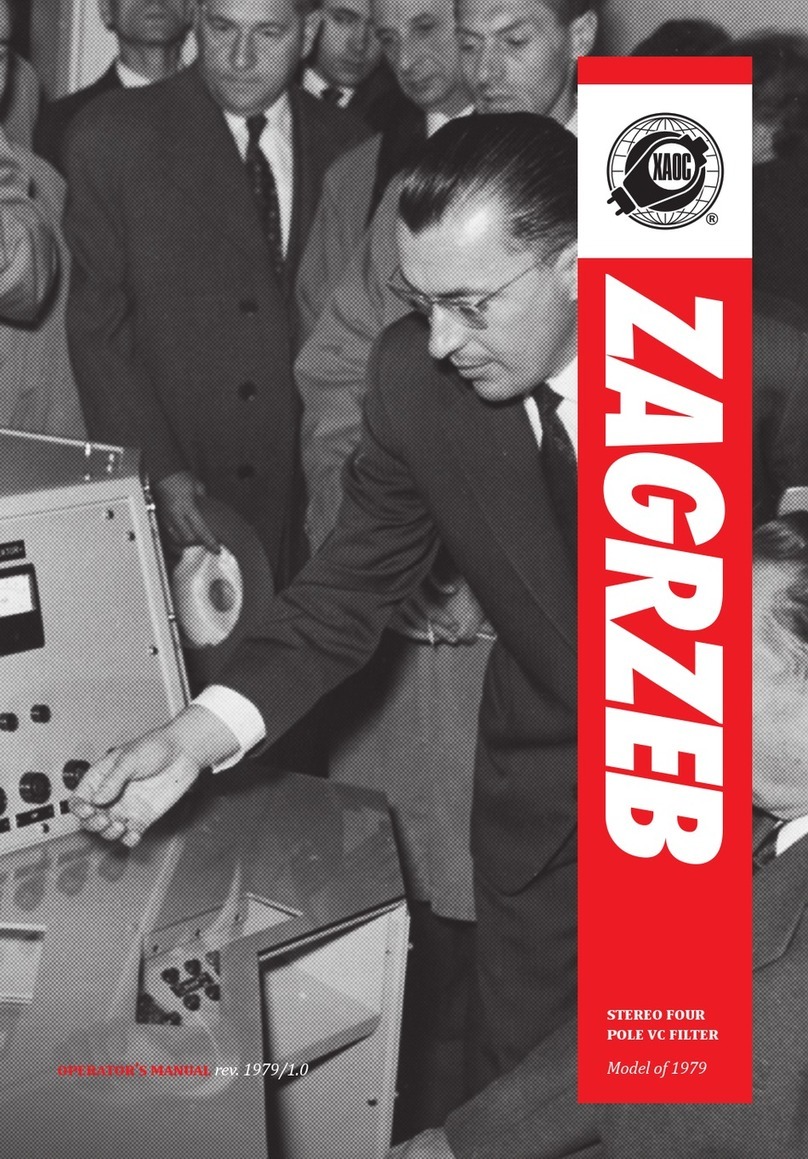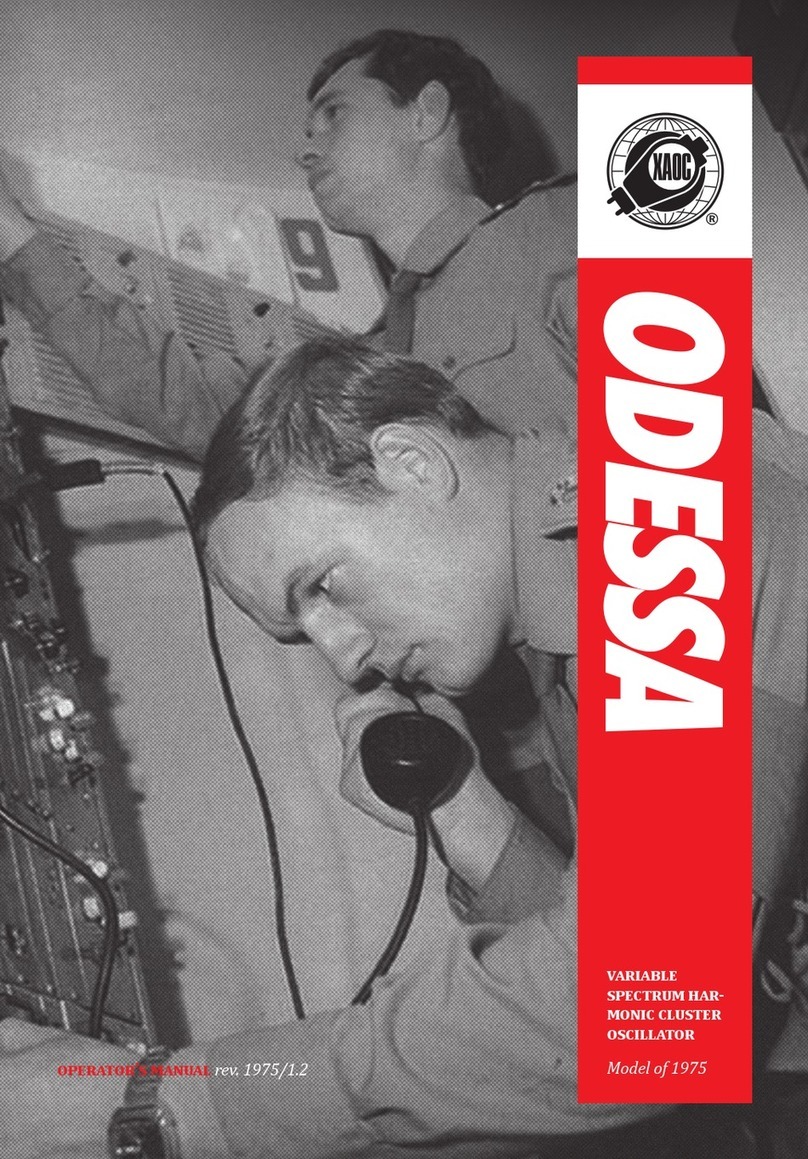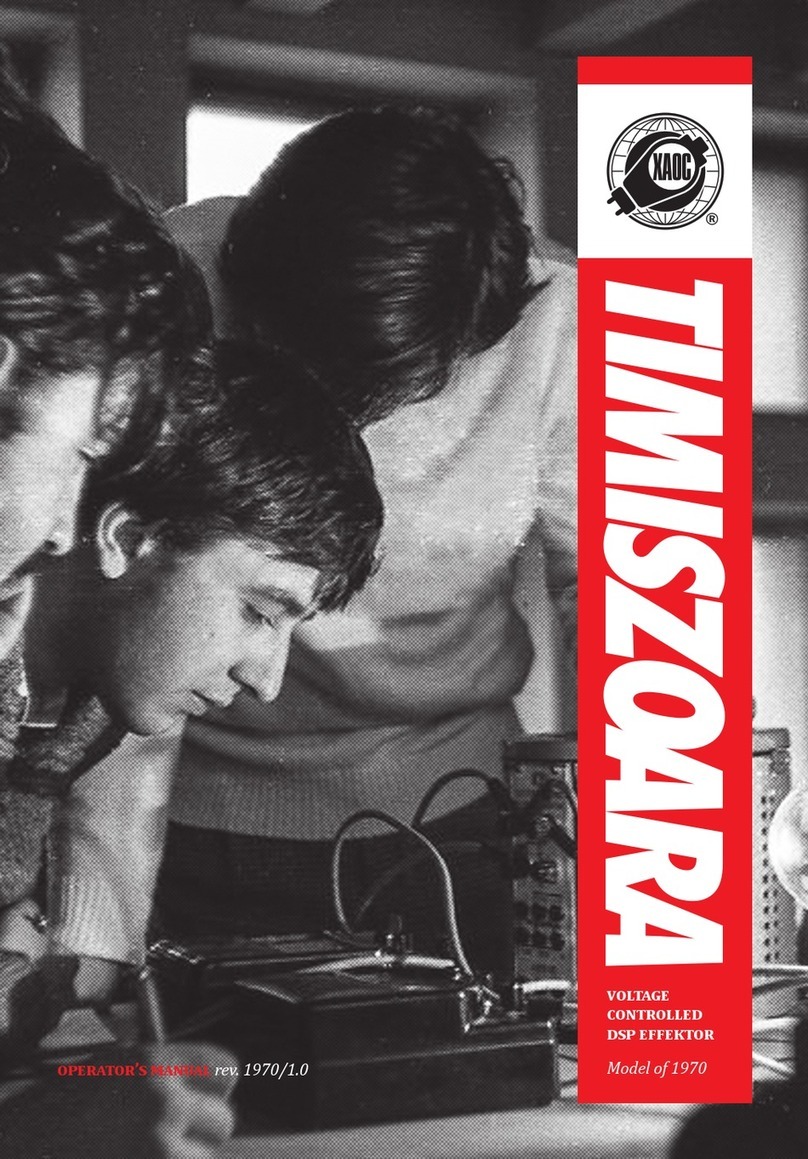
4
switch 9offers three frequency pre-scal-
ing options: 1:256, 1:1, and 1:64K (in oth-
-
imately 2MHz, this yields about 7kHz
(high audio rate) in the upper position
and about 28Hz (LFO rate) in the lower
position. note: The switches have no ef-
fect when you plug your own clock to the
input 5.
PRinciPlE OF OPERaTiOn
register that holds the internal state of
the machine and an adder that combines
the internal state with the incoming
data value. At every rising edge of the
clock signal, the output of the adder is
written back to the register. The choice
of the clock input (incrementing or dec-
rementing) decides whether it is a sum
or difference, though two clocks may be
-
ing clock has higher priority.
The Leibniz clock that arrives together
with the data through the ribbon data
cable may be used to drive the counter
when you set the leftmost lbz clk switch
to the on position. Since this clock is of-
ten very high frequency, it may be conve-
niently pre-scaled by 1:256 or 1:65,536
via the rightmost switch. This (divided
or not) Leibniz clock is always used for
counting up, therefore it is normalled to
the incr clock input and is replaced by
anything patched there.
Erfurt also features an internal high
frequency (near 2MHz) clock (selected
using a jumper at the back) that is useful
when the unit is operating standalone or
connected to a static Leibniz data source
like Lipsk (provided nothing is connected
to Lipsk's Leibniz in header).
The Leibniz out header at the back taps
directly from the adder before the data is
written back to the register. This allows
Erfurt to pass the potentially quickly
changing data to subsequent Leibniz
modules in the chain (e.g. samples of a
signal from Drezno to Jena). The data is
being offset (modulo 256) by the content
of the register regardless of whether the
content stays still, is updated slowly or
rapidly (according to the clocks plugged
into the front panel jacks), or is being ad-
justed manually.
cOUnTER Vs FREQUEncy diVidER
When Erfurt is operating without any
Leibniz data source, the in header at the
back should be left unplugged. There is a
normalization on the header, enforcing
the value of 1 (binary: 00000001) being
fed to the adder. Therefore, Erfurt chang-
es its state by 1 at each impulse from the
clock input so that it counts from 0 to 255.
-
ates modulo 256. Obviously, with a clock
plugged into the decrementing input, Er-
furt similarly counts down from 255 to 0.
Taking signals out of the individual bit
jacks offers the clock frequency divided
by 2 (bit 0), 4 (bit 1), 8 (bit 2), 16 (bit 3),
32 (bit 4), 64 (bit 5), 128 (bit 6), and 256
is a classic octave frequency divider.

































